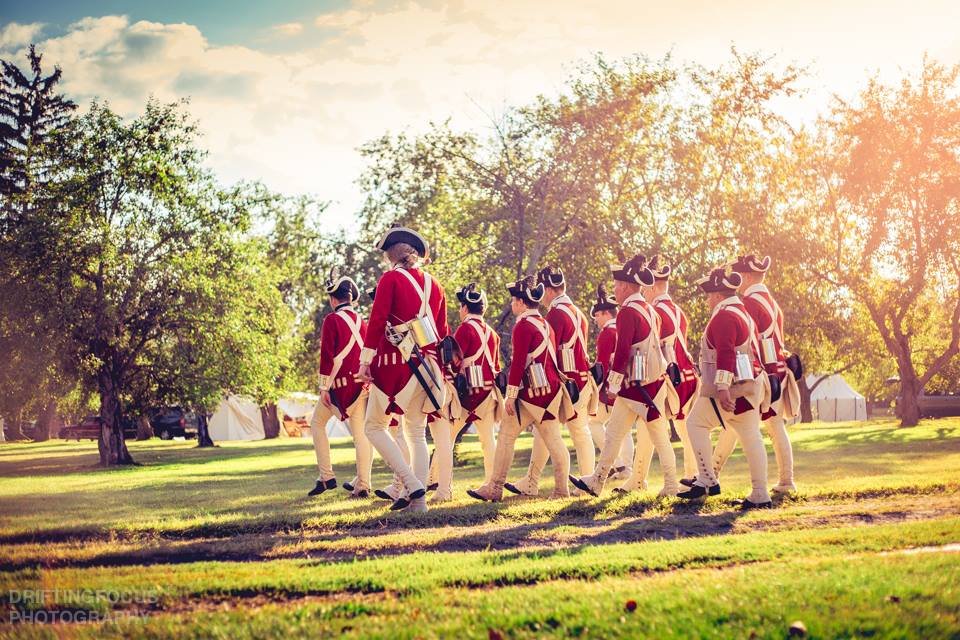
Revisit the best of the blogs from 17th and friends!
The Things We Carry: On the Strength of the Army
A couple weeks ago we had a member of the 17th Regiment of Infantry, Damian Niescior, write about all the things he carried during a weekend in the 18th century as a soldier in the British Army... this week we have a follow up post brought to you by Carrie Fellows, who has been working and recreating 18th century domestic arts for more than 25 years. A year or so ago Carrie did a symposium with Kimberly Boice's: Historie Academie, which I happened to attend where she did a talk and workshop on how to pack for an event. So upon request it reminded me that she'd be the perfect fit to talk about what a follower of the army would bring with them.
Read Damian's blog post here.
- Mary S. an attached follower of the 17th Regiment of Infantry
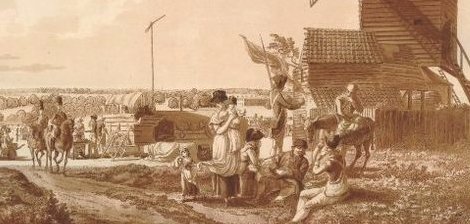
It can be difficult to explain to people what I do for fun. I combine my passion for history and the outdoors by interpreting the lives of women who, out of necessity, followed the Continental Army (and occasionally, the British army) during the American War for Independence. I have portrayed a laundress, an officer’s servant, a refugee, and a soldier’s wife, but regardless of whom I portray, the things I carry with me may vary slightly according to season, but remain essentially the same. Over the years, I have refined and limited the number of objects I carry, lightening my load for travel on foot over long distances, rough terrain, and the occasional river ford.
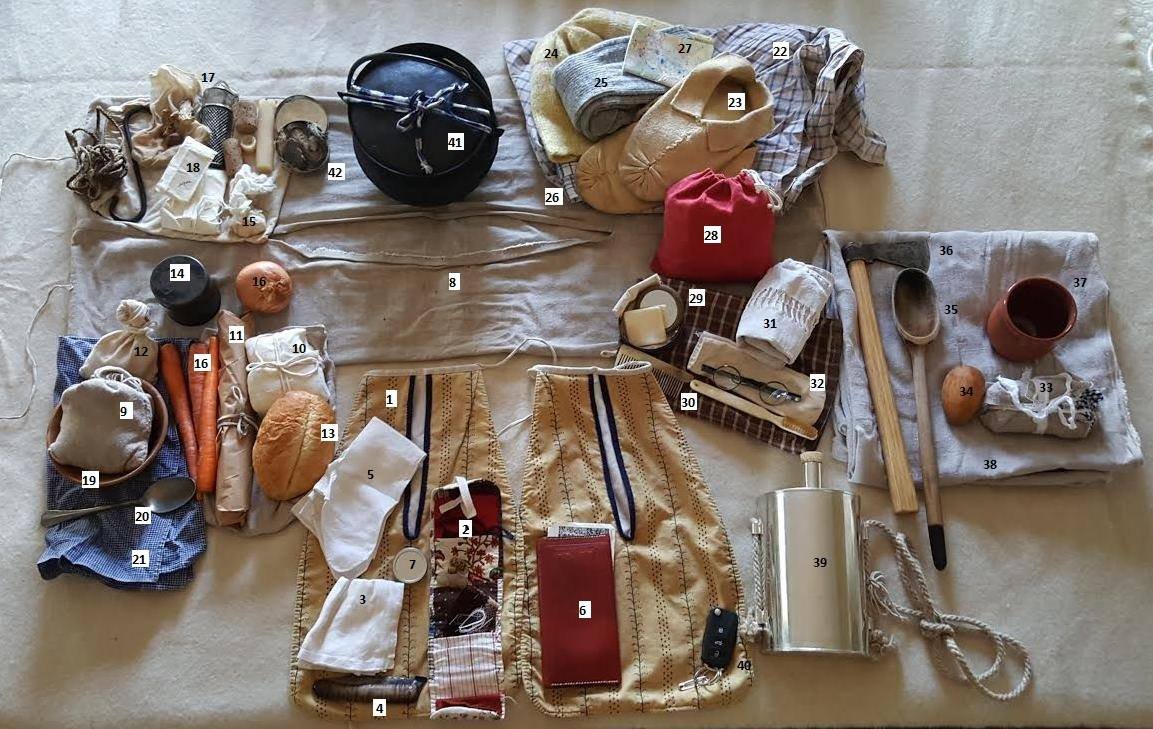
Records of what women carried are practically nonexistent, but one can find clues in runaway ads, military records, and the occasional primary source. Women attached to the army had only what they brought away with them, or acquired on the road. Women “on the strength” of the army were entitled to a half-ration of food (children received a one-quarter ration.) I am always hungry, and as rations aren’t always available, carry enough food to get by.
Tied about my middle, under my gown, a pair of pockets (1) is suspended. These contain both modern items (pocket on right) and period ones (pocket on left). I often leave my phone in the car unless I need to take photos for a talk or article, or will be in the deep backcountry.* My car keys (40) are pinned firmly to the inside bottom corner of my left pocket. In my right pocket: a sewing kit (2) or “housewife” – a roll of cloth with pockets to hold sewing supplies and tiny items like sleeve buttons, also a linen handkerchief (3), pocket knife (4), linen or woolen mitts (5), period scrip and real cash in a reproduction pocketbook (6), lip balm in a tin container (7).
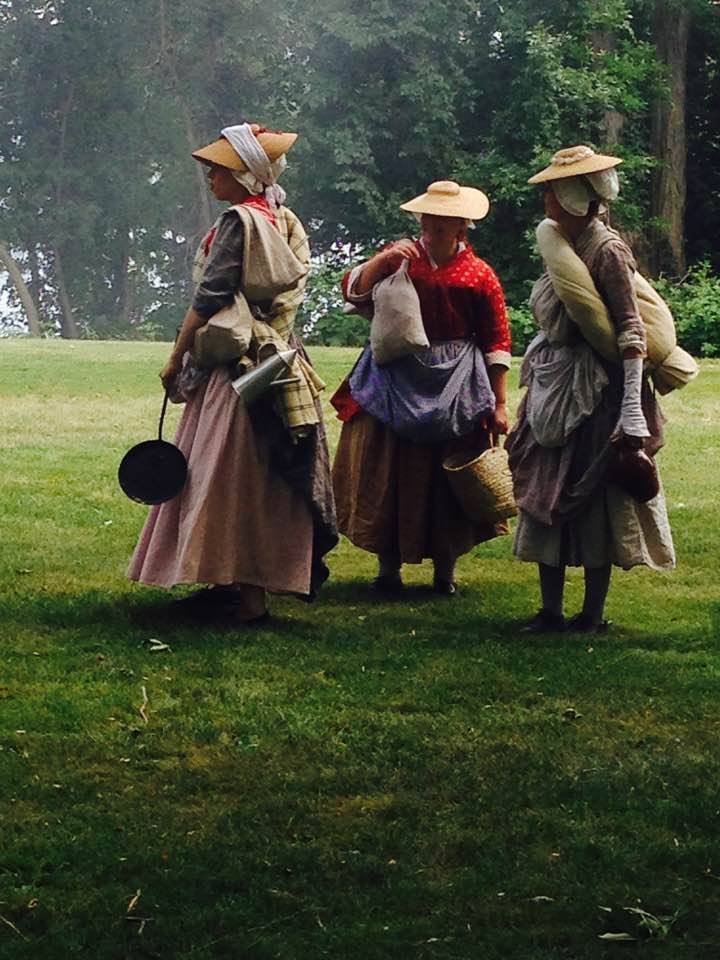
I carry most of my gear in a wallet (8) – a rectangular cloth bag with a slit opening in the center. One places items in each end, then twists the entire thing at the center, closing the slit and forming a kind of narrow strap, then slung over the shoulder. I try to segregate the two ends into food/related items and clothing/personal items. The food side holds a small bag of cornmeal or rice (9), cheese wrapped in 2 layers of linen (10 - the inner one dampened with vinegar); a cured sausage wrapped in brown paper (11), a small bag of walnuts (12), bread (13), tea (14), salt (15), seasonal vegetables (16), a spice bag, grater, candle ends and extra corks (17), paper packets of flour and pepper (18), and sometimes I even remember my fire kit: flint, steel, charcloth and tow in a tin box (42). Food-related items include a turned wooden bowl (19), which can serve as both drinking and eating vessel, an eating spoon (20), and a linen towel (21).
In the other end, I carry extra clothing items tied up together in a large kerchief (22): moccasins (23) and a man’s wool cap (24) for sleeping in, stockings (25), neck handkerchief (26), and a small paper notebook (27). Some also carry a clean shift, but I do not, as I am rarely in a situation where there is privacy sufficient change it. Also: a tiny modern first aid kit in a red linen bag (28), personal toiletry items in another small drawstring bag: a tin box with soap and mirror (29), horn comb and bone toothbrush (30), handwoven wash towel (31), spectacles (32), allergy meds &, contact lens case (not pictured). Reenactor etiquette requires one to manage any non-historic personal care out of view as much as possible. Optional items, depending on the planned activity: a small bundle of mending patches and yarn (33), and a darning egg (34) to occupy time and to trade (mending skills have value), a large wooden cooking spoon (35), and a small axe (36). If there’s room, “luxury” items include a ceramic cup (37) and a big linen wallet that doubles as a straw tick (38).
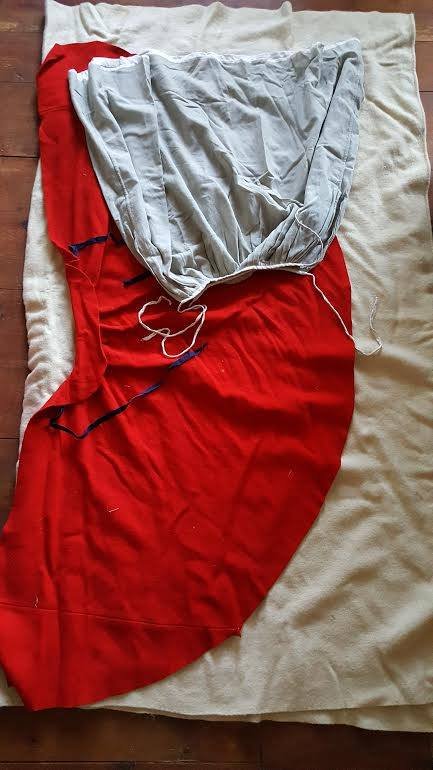
I usually carry just one blanket (with a wool petticoat and cloak inside) rolled up, tied together at the ends to form a “U”, and carried across my body. I put on the wallet first, then the canteen (39) - the wallet cushions the strap - then the rolled blanket over that. The blanket helps keep both wallet and canteen secure, close to my body, and quiet as I walk – or run.
The last thing I pick up is my small iron pot (41), with its sheet iron lid tied on so it doesn’t rattle or become lost. If I have eggs or fruit, I pack it in the pot. It goes to every event with me. I hadn’t thought about it before, but that little pot – representing security, hot food, comfort (and home?) connects me to the women I portray who carried what they most valued when they followed the army.
*Nothing ruins an accurate setting faster than when the smartphones come out and glow blue at night.
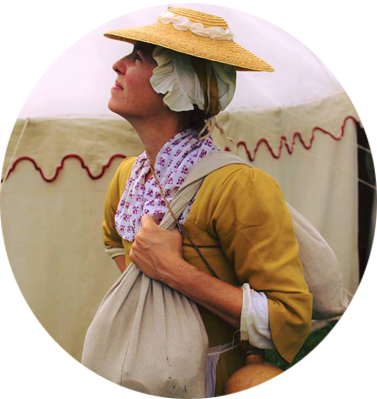 CARRIE FELLOWShas been interpreting 18th century domestic arts for more than 25 years and is the Sergeant of Women for the progressive living history group, Augusta County Militia. She has held positions in history nonprofits and museums as a curator, educator, director, and board member, and is currently the Executive Director of the Hunterdon County (NJ) Cultural & Heritage Commission. She and her husband Mark are addicted to old houses.
CARRIE FELLOWShas been interpreting 18th century domestic arts for more than 25 years and is the Sergeant of Women for the progressive living history group, Augusta County Militia. She has held positions in history nonprofits and museums as a curator, educator, director, and board member, and is currently the Executive Director of the Hunterdon County (NJ) Cultural & Heritage Commission. She and her husband Mark are addicted to old houses.

